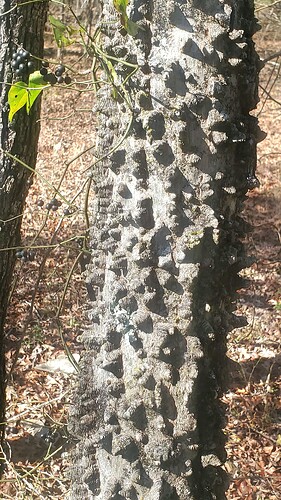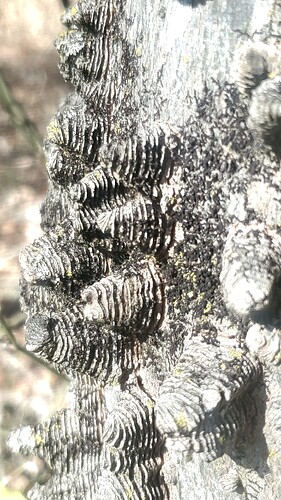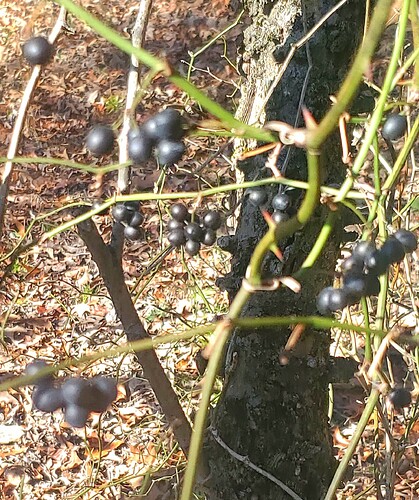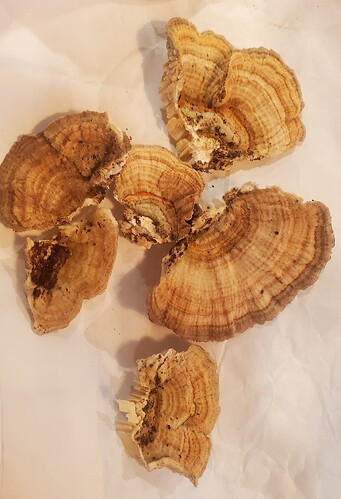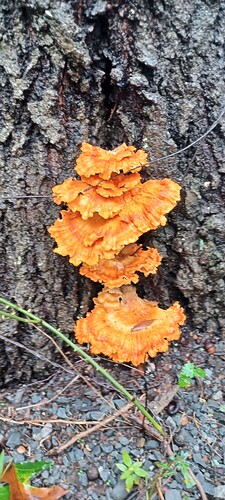Knowing what plants are edible in your area is a valuable survival skill, and it can be a fun way to add some extra produce to your table throughout the growing season.
What types of plants you can forage vary greatly by what region you are in and specific micro-climatic features like slope, moisture, and how much sunlight is available.
Nutritional Value and Calories
Foraged foods are often deficient in calories, with some being low in calories and essential nutrients. While Wild Onions, garlic, and other greens and lettuces are delicious and contain some vitamins and minerals, you need a lot more than that to take care of your daily caloric needs. For those who are just foraging to supplement the food stocks we have at home, the meat we raise, etc., this is not as big a deal. In a survival situation or Depression, however, it matters a lot more. Foraging takes time and energy that you could dedicate to finding or growing food with a higher caloric payoff.Most Common Edibles of North America
Below you will find a list of some of the more common edible plants in North America. If you click on any name a separate tab will open with detailed information about the plant.Some of the plants listed are not technically native but have become naturalized in an area. A few are even considered invasive. A few on this list are often cultivated in gardens but often escape to thrive in the wild or they are found where there used to be a house.
Wild Fruits
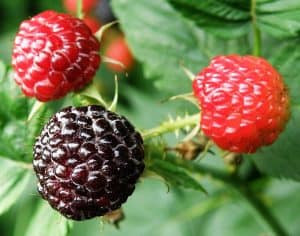
American Elderberry (Sambucus Canadensis)
Strawberry (Fragaria virginiana)
Raspberries and Wineberries
Blueberries (Vaccinium corymbosum)
It is important to note that some wild fruits differ a lot more from their domestic counterparts than you might realize. Some wild apples, for example, are small and hard enough that you have to cook them to make them edible and get the full nutritional benefit.
Elderberries, domestic and wild, are very good for you, but they require adding something sweet to make them palatable.
Wild Onions and Alliums
[caption id="attachment_621397" align="alignnone" width="300"]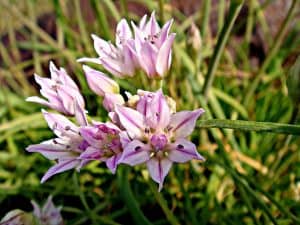 Wild Onion[/caption]
Wild Onion[/caption]
Wild Onions
There are many varieties of wild onion out there. Here in the Appalachian mountains, we look forward to Spring and the emergence of Ramps. The Ramp is a Wild Leek. Many people fry them with eggs, but they can be used in any dish requiring scallions or leeks. They do well when transplanted. If someone gives us some ramps or we buy them at a produce stand, we sometimes keep the white bulb at the bottom and plant them where it is moist on our property.
[caption id=“attachment_621394” align=“alignnone” width=“300”]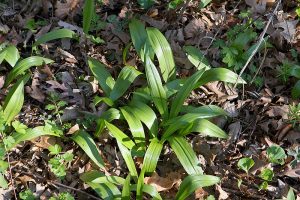 Wild Ramps[/caption]
Wild Ramps[/caption]
Wild onions and garlic are great choices for beginning foragers because they are so easy to identify, and there are not any lookalikes that have the potential to make you ill.
Greens, Lettuces, and Misc. Edible Plants
Bull Thistle (Circium vulgare)Chickweed (Stellaria media)Chicory (Cichorium intybus)
Cow Parsnip (Heracleum lanatum)
Fireweed (Epilobium angustifolium)
Garlic Mustard (Alliaria petiolata)
Jerusalem Artichoke (Helianthus tuberosus)
Lambsquarters (Chenopodium album)
Miner’s lettuce (Claytonia perfoliata)
Red Clover (Trifolium pretense)
Salsify (Tragopogon porrifolius)
Sheep Sorrel (Rumex acetosella)
Stinging Nettle (Urtica dioica)
Western Dock (Rumex occidentalis)
Sarsaparilla (Aralia nudicaulis)
Amaranth (Amaranthus retroflexus and other species)
Asparagus (Asparagus officinalis)
Dandelion (Taraxacum officinale)
Foraging Wisely
Be careful where you forage. Areas with lots of commercial agriculture could be contaminated with runoff from chemical sprays and fertilizers. Roadsides and areas around railroad tracks are often heavily sprayed, and they have high levels of petroleum product runoff from passing vehicles.Edible plant walks and classes are a great way to learn to identify edible plants in your area and gain confidence. Many community college and nature groups offer these types of walks and classes for free or a modest fee.
You must process some edibles well before consuming them.
Bamboo shoots are a good example of a plant that has become naturalized in many areas and must be processed correctly to avoid illness.Acorns from White Oak and hickory trees, and buckeyes can be consumed but only if processed. Processing can take some time which is why most people do not bother with it anymore. It is important to follow processing directions precisely to avoid illness. In a survival situation, where you may already be experiencing fatigue and weakness, even a day or two of stomach upset can be lethal.
Foraging For Mushrooms
[caption id="attachment_621409" align="alignnone" width="300"]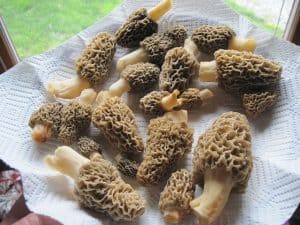 Morel Mushrooms. Morels are one of the most highly sought-after mushrooms. They are fairly easy to identify and a good choice for people that just want to forage occasionally for mushrooms. They can be hard to find in some areas. In the Pacific Northwest, where I grew up, there were huge patches.[/caption]
Morel Mushrooms. Morels are one of the most highly sought-after mushrooms. They are fairly easy to identify and a good choice for people that just want to forage occasionally for mushrooms. They can be hard to find in some areas. In the Pacific Northwest, where I grew up, there were huge patches.[/caption]
We grow a lot of Shiitake and Nameko mushrooms on our farm. This provides plenty for our table and to dry. Foraging for mushrooms is, however, a hobby that some enjoy.
I do not encourage people to forage for most mushrooms because to do so safely you really need to be committed to learning proper identification and spending a lot of time outside practicing. This is not something a lot of people have time for nor enough interest.
It is far less likely that you make a lethal mistake with a plant if you use a good guide. Edible mushrooms can have a lot of lookalikes. Mushroom poisoning is typically far worse and more likely to be fatal than most plant poisonings.
If you want to forage mushrooms, you need to put in the time and effort to get very good at identification. This involves going on foraging expeditions with experienced people or a mushroom club, studying books, and learning what mushrooms in your area are the most common deadly ones.
Some people are more sensitive to certain mushrooms than others. For example, Chicken of the Woods is relatively easy to identify and is considered a choice edible mushroom. Still, it is known to cause some mild to moderate gastrointestinal distress in some individuals. This means the first time; you might want to just eat a little until you see how you handle it.
In a major survival situation, I especially discourage mushroom foraging because it is far easier to make mistakes if you are not functioning well due to hunger, thirst, or exhaustion. Also, suppose you don’t have any experience or know what you are looking for. In that case, it is definitely not worth the risk to eat something that has relatively low overall nutritional value.
Legalities of Foraging
Foraging on the property of others is considered trespassing. Some landowners may be okay with you foraging if you ask but don't be too offended if they say no. Unfortunately, we live in a country where people like to sue each other for just about anything, so landowners are often very reluctant to allow others to do much on their land.Some plants that are delicious to eat may be protected as well. The wild Trilliums that grow in big patches in our area, for example, are protected. Part of the reason for this was that so many people were digging them up to transplant or picking them to eat.
National parks, forests, and other public areas may have their own sets of specific rules and regulations. Some plants have more protections than you might realize. You can get a hefty fine and criminal charges for digging Ginseng in protected areas around here.
Always leave some plants. Don’t wipe a spot out.
Want to have more food to forage? Well, don’t get greedy and take all of something. You need to leave some plants to reseed an area in the years to come.
Taking more than you will use is also very wasteful.
Books For Aspiring Foragers
I have compiled a list of region specific edible plant guides that you may find useful. There are plenty of guides out there that are designed to be guides for most of North America. While it may be interesting to have a general volume on edible plants, most will find it a lot more useful to have specific information for a region. Guides that concentrate on one region tend to be better illustrated and are great for those that are just starting to forage.Northeast
Northeast Foraging: 120 Wild and Flavorful Edibles from Beach Plums to Wineberries
NorthwestPacific Northwest Foraging: 120 Wild and Flavorful Edibles from Alaska Blueberries to Wild Hazelnuts
SouthwestEdible and Useful Plants of the Southwest: Texas, New Mexico, and Arizona
SoutheastSoutheast Foraging: 120 Wild and Flavorful Edibles from Angelica to Wild Plums
AlaskaAlaska's Wild Plants, Revised Edition: A Guide to Alaska's Edible and Healthful Harvest
HawaiiCalifornia
California Foraging: 120 Wild and Flavorful Edibles from Evergreen Huckleberries to Wild Ginger
Mountain States (Idaho, Montana, Wyoming, Utah, Colorado, eastern Oregon, eastern Washington, and northern Nevada)Mountain States Foraging: 115 Wild and Flavorful Edibles from Alpine Sorrel to Wild Hops
Cooking and Preservation of Foraged Foods
If you harvest a lot of wild food at once, you should have a preservation plan. Dehydration works well for some foods. Wild fruits can be frozen or turned into jam and jelly. Wild greens can be trickier to preserve in a tasty fashion.You can use garlic Mustard and other greens to make a delicious pesto. We make pesto and freeze it from our garden greens every year. Here is a link to how Matt and I make pesto.
A cookbook with recipes based on foraged foods is a good idea if you plan on foraging a lot.
Foraging Cookbook: 75 Recipes to Make the Most of Your Foraged Finds
General Foraging Tips
Foraging involves getting off the beaten path. This is especially true if you want to find a lot. To make foraging worth it, you should set aside a half or full day, especially if you are just a beginner.Take food, water, and suitable protective clothing. For remote areas, a map and even a compass are recommended. GPS can work too. All hikers and foragers should have a basic first aid kit. Running into wildlife is a hazard of foraging. Bears, snakes, etc., can be very common in some areas, even if you are not far out in the wilderness.
Always check weather forecasts and radars before planning any major foraging trip.
Make sure that you take plenty of mesh bags or other containers to put your foraged items in.
Do you forage? What are your favorite plants to gather? Do you have any good recipes to share with the Peak Prosperity tribe? Do you have any websites or books that you recommend? Let’s discuss below!
Related Articles
https://www.peakprosperity.com/edible-landscaping/This is a companion discussion topic for the original entry at https://peakprosperity.com/foraging-for-edible-plants/
